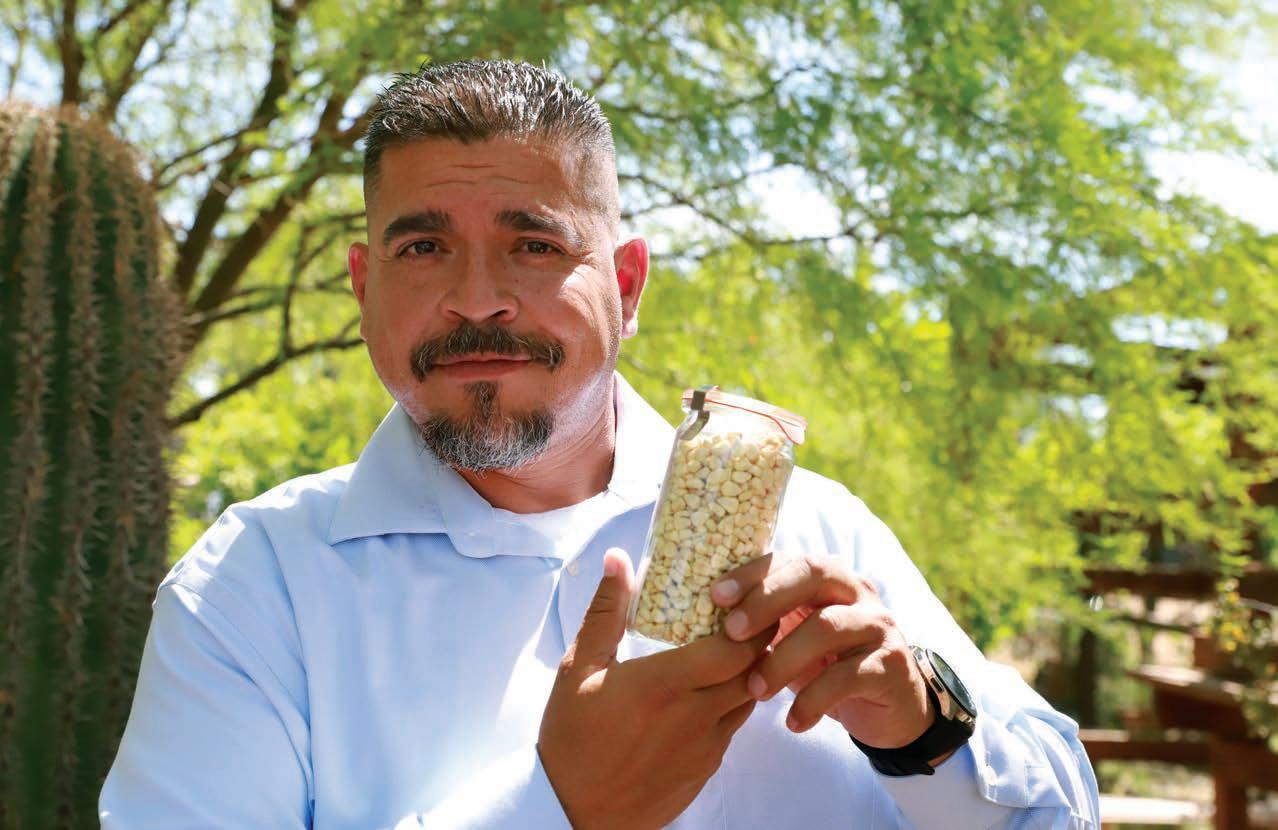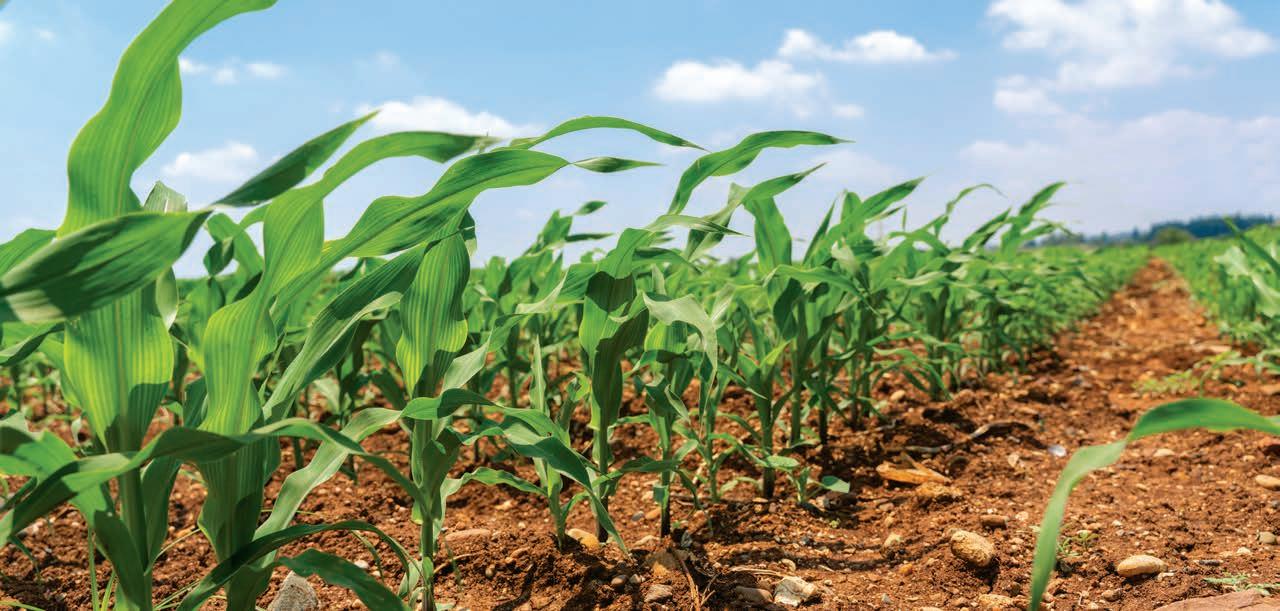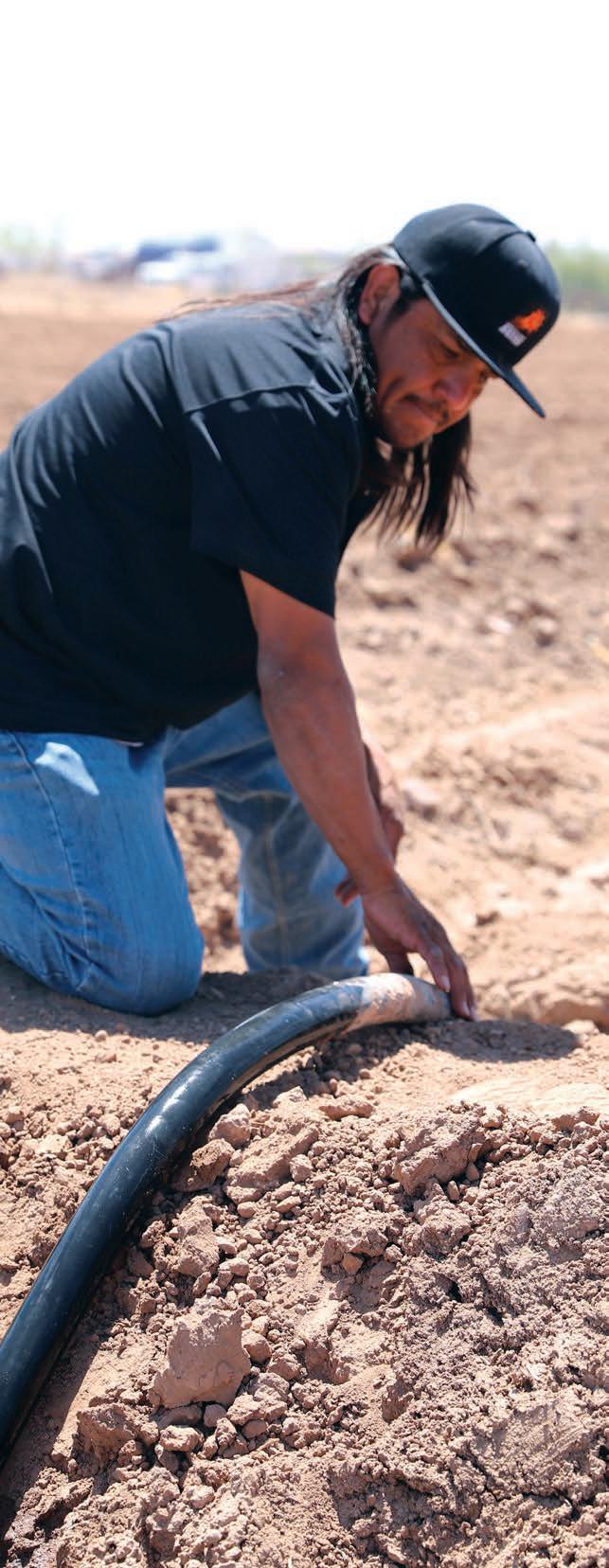
5 minute read
Cultivating Traditions
Jacob Butler developed an interest in growing traditional plants when he was just 17. A friend, Stetson Mendoza, asked Jacob to go with him to New Mexico. Stetson’s father, Ed, and the Traditional Native American Agriculture Association were teaching a two-week program on cultivating and preserving heritage seeds, utilizing techniques practiced by indigenous communities from around the world.
At a crossroads in his life, Jacob decided a change of scenery would do him good. Little did he know those two weeks would instill in him a life-long passion.
“I knew about some of our culture and traditions, but back then, it was not in our schools and many of our elders had come from boarding schools and felt that farming was an old way of life not conducive to modern-day success, so I had little interest. While I was in New Mexico I saw the impact young people—people who looked like me— were making in bringing traditional foods and cultural practices back to their communities, I wanted to do it too,” said Jacob. “It took me going to New Mexico to learn from an elder of the Tohono O’odham Nation about traditional values, our himdag—way of life, the path that we walk in life. Initially, it was taught to me through agriculture, not only in how to grow the plants but also our people’s connection to them, and our connection to one another.”
When he returned to Salt River, Jacob started a heritage seed bank in his home with his first seeds, including 60-day corn given to him by Ed. It was 1998. Jacob still plants the descendants of those seeds today.
“Our people were gifted corn thousands of years ago. Over those years, we created 60-day corn, the fastest-growing corn in the world. There is an origin story of how corn came to the people,” said Jacob. “They were not made by the creator but given to us by the living embodiment of the plant, Corn Man, who came and offered the silks of his chin to the community with the instructions of how to bring the seeds of corn, then he left.”
When Jacob’s interest in traditional plants became known, elders from all over the O’odham communities began giving him seeds that their families had grown when they were young. As the seed bank grew, Jacob realized the importance of noting from whom and where the seeds had come.
For the first few years, the seed bank remained at Jacob’s home. However, in 2003, Jacob moved it to what would become Cultural Resources.
There, the focus was on educating the community about traditional seeds and creating interest through food tasting and gardening. Jacob said that sometimes it was difficult.
There, the focus was on educating the community about traditional seeds and creating interest through food tasting and gardening. Jacob said that sometimes it was difficult.
“There was a disconnect because for the past 100 years, many of our traditional foods were lost and when we tried to re-introduce lost varieties because there was no recent memory among our people, some thought that we were bringing in seeds that did not belong in the community—but those seeds started with our people. We just lost them,” recalled Jacob.

Jacob shared that in the past, the community had 13 varieties of tepary beans. When Cultural Resources started its first community garden in 2003, the community only remembered two— white and brown.
When Stetson joined Cultural Resources more than 10 years ago, he and Jacob again teamed up to create interest among the community in cultivating and eating foods grown from traditional seeds.

“When I first started, we only grew a few types of beans, corn and some squash,” said Stetson. “This spring, we started working a new acre with some new foods like keli baso—old man’s chest—melons, yellow water watermelon, Pima squash, white and brown tepary beans and devil’s claw.”
In addition to the community garden, Jacob and Stetson hope to inspire individuals to begin growing traditional foods at home. The bank sets aside a portion of the seeds to be given to individuals interested in home gardening. These are given out in January and February, in time for spring planting.
“We want to get more people interested in growing and eating traditional foods so we have a program where we will help community members to start a garden using traditional seeds. We hope that they will grow them, enjoy the produce and return some of their seeds back to us,” said Stetson. “But they need to realize that these seeds are like babies—they take a lot of care. You must water them and protect them from birds and gophers, but it’s well worth it.”

A large portion of the seed bank is held in stock to be available if the community wanted to begin growing on a tribal level.
Jacob believes this would have many benefits. Indeed several studies show that native foods and a return to traditions prevent many of our modern-day ailments such as diabetes, obesity, heart disease and even behavioral health issues. Some studies even show a decrease in crime in communities where traditional foods are eaten and cultural practices are observed.
“Traditional foods are better for us—just one tepary bean has the nutrients of five pinto beans and takes fewer resources to grow—but it also connects us with our culture, eating as our ancestors, once did,” said Jacob. “The seed bank is helping to ensure that our community still has access to traditional foods that nourished our bodies for generations.”
To learn more about traditional foods and gardening, call Cultural Resources, at 480.362.6325.










